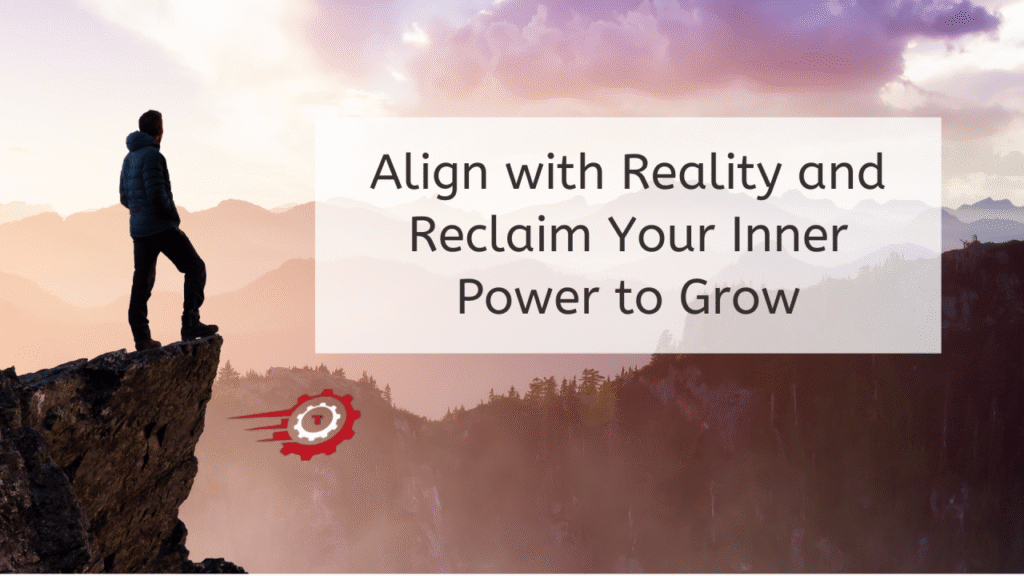Sometimes life feels like a dream—full of “shoulds,” “what ifs,” and endless thoughts spinning in our heads. We imagine how things could be or should be, yet when reality hits, it feels harsh or completely different from what we expected. Learning how to align with reality is not about giving up on dreams—it’s about seeing things as they truly are and responding wisely. This guide explores why we struggle, how to notice when we’re out of touch, and simple ways to build a grounded mindset every day.
What Does It Mean to Align With Reality?
To align with reality means seeing life as it truly is—not as you wish it to be, fear it to be, or assume it is. It’s about recognizing facts, understanding what’s in your control, and letting go of illusions. When you’re aligned with reality, you can make decisions based on truth, not emotions or fantasies.
Think of it like cleaning a dirty window. When the glass is cloudy, everything outside looks distorted. But when you wipe away the grime, you see the world clearly. Aligning with reality clears away mental fog so you can respond to life wisely instead of reacting blindly.
Why Do We Struggle to See Reality Clearly?
Humans naturally filter reality through emotions, biases, and beliefs. Our minds like stories—we tell ourselves how things should be, blame others for how they are, or imagine perfect futures to escape discomfort now. Social media, cultural expectations, and personal trauma add more layers, making it hard to see what’s really happening.
We also resist reality when it’s painful. A breakup, job loss, or failure may feel unbearable, so we deny or avoid it. This creates suffering because fighting reality is like trying to stop the ocean waves—you exhaust yourself without changing anything.
Signs You’re Out of Touch With Reality
When you’re not aligned with reality, life feels heavy and confusing. Here are some signs to watch for:

Ignoring What’s Really Happening
Do you avoid facts because they’re uncomfortable? Maybe you overlook warning signs in relationships or deny a health issue, hoping it will go away. Pretending problems don’t exist doesn’t make them disappear—it just delays solutions.
Feeling Stuck in Daydreams
Do you spend hours imagining a perfect future but take no action today? Dreaming isn’t bad, but staying there keeps you disconnected from the present. You may feel frustrated when reality doesn’t match your inner fantasy.
Reacting to Emotions, Not Facts
When emotions run high, it’s easy to believe they represent truth. Anger makes others seem like enemies. Fear makes challenges look impossible. But emotions are temporary signals—not reality itself. Acting from them often leads to regret.
Simple Ways to Align With Reality
The first step in aligning with reality is slowing down. Notice what’s real right now—not what you wish, fear, or assume. Ask yourself: What are the facts? When you face hard truths, you open the door to real change.
Practice questioning your thoughts. Are they based on evidence, or are they stories? Instead of saying, “This shouldn’t happen,” ask, “But it did. Now what?” This shift from resisting to accepting brings peace.
Surround yourself with grounded people. Feedback from others helps you see blind spots. And limit exposure to things that distort reality, like toxic news cycles or social media comparison.
How Mindfulness Helps You See Clearly
Mindfulness is a powerful tool for aligning with reality. It teaches you to observe life as it is—moment by moment—without judgment. When you’re mindful, you notice your thoughts and feelings without getting swept away.
Imagine standing on a riverbank watching leaves float by. Each leaf is a thought or emotion. Instead of grabbing or fighting them, you simply watch. This awareness helps you respond wisely rather than reacting on autopilot. Studies show mindfulness reduces stress, improves clarity, and increases acceptance of reality—even difficult ones.
Stop Fighting Reality and Start Accepting It
Many people resist reality because they confuse acceptance with giving up. But acceptance doesn’t mean you approve of what happened or don’t care about change. It means you stop arguing with what is and use your energy to move forward.

Why Acceptance Isn’t Giving Up
Think of acceptance as saying, “This is where I am.” From there, you can plan the next step. If you’re lost in the woods, denying where you are doesn’t help—you need to accept your location before finding a path out.
Let Go of “Should” Thinking
“Life shouldn’t be this way.” “People should treat me better.” These thoughts sound reasonable but create pain. Life unfolds as it does, not as we demand. Releasing “should” opens space to see options clearly.
How to Build a Realistic Mindset Every Day
Start small. Each morning, set an intention to notice reality as it is. When upset, pause and ask, “What’s actually happening? What’s my story about it?” Keep a journal of facts versus interpretations. Over time, this practice rewires your brain to stay grounded.
Thoughts: Living in Reality Feels Lighter
When you align with reality, life feels lighter—not because problems vanish but because you stop carrying the extra weight of denial and resistance. You see challenges clearly, make wiser choices, and feel more peace. Instead of being stuck in the past or worried about the future, you live fully in the now—where real life happens.
The Bottom Line
Aligning with reality is a life skill that brings clarity, peace, and strength. It doesn’t mean you settle for less or stop dreaming—it means you see the world as it is and work with it wisely. Start small. Notice the facts. Practice mindfulness. Let go of “should” and embrace “what is.” When you live aligned with reality, even hard moments become easier because you’re no longer fighting the truth.

